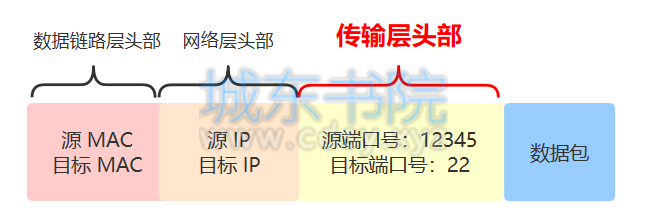Shell特殊变量:$0, $#, $*, $@, $?, $$和命令行参数
时间:06-10来源:作者:点击数:
特殊变量列表
| 变量 | 含义 |
|---|---|
| $0 | 当前脚本的文件名 |
| $n | 传递给脚本或函数的参数。n 是一个数字,表示第几个参数。例如,第一个参数是$1,第二个参数是$2。 |
| $# | 传递给脚本或函数的参数个数。 |
| $* | 传递给脚本或函数的所有参数。 |
| $@ | 传递给脚本或函数的所有参数。被双引号(” “)包含时,与 $* 稍有不同,下面将会讲到。 |
| $? | 上个命令的退出状态,或函数的返回值。 |
| $$ | 当前Shell进程ID。对于 Shell 脚本,就是这些脚本所在的进程ID。 |
命令行参数
运行脚本时传递给脚本的参数称为命令行参数。命令行参数用 $n 表示,例如,$1 表示第一个参数,$2 表示第二个参数,依次类推。请看下面的脚本:
# cat argc.sh
#!/bin/bash
echo "File Name: $0"
echo "First Parameter : $1"
echo "First Parameter : $2"
echo "Quoted Values: $@"
echo "Quoted Values: $*"
echo "Total Number of Parameters : $#"
运行结果:
# sh argc.sh arg1 arg2 arg3
File Name: argc.sh
First Parameter : arg1
First Parameter : arg2
Quoted Values: arg1 arg2 arg3
Quoted Values: arg1 arg2 arg3
Total Number of Parameters : 3
需要注意的是$10 不能获取第十个参数,获取第十个参数需要${10}。当n>=10时,需要使用${n}来获取参数。示例如下:
# cat 10argc.sh
#!/bin/bash
funWithParam(){
echo "The value of the first parameter is $1 !"
echo "The value of the second parameter is $2 !"
echo "The value of the tenth parameter is $10 !"
echo "The value of the tenth parameter is ${10} !"
echo "The value of the eleventh parameter is ${11} !"
echo "The amount of the parameters is $# !" # 参数个数
echo "The string of the parameters is $* !" # 传递给函数的所有参数
}
funWithParam 1 2 3 4 5 6 7 8 9 34 73
执行结果如下:
# sh 10argc.sh
The value of the first parameter is 1 !
The value of the second parameter is 2 !
The value of the tenth parameter is 10 !
The value of the tenth parameter is 34 !
The value of the eleventh parameter is 73 !
The amount of the parameters is 11 !
The string of the parameters is 1 2 3 4 5 6 7 8 9 34 73 !
$* 和 $@ 的区别
$* 和 $@ 都表示传递给函数或脚本的所有参数,不被双引号(” “)包含时,都以”$1” “$2” … “$n” 的形式输出所有参数。但是当它们被双引号(” “)包含时,”$*” 会将所有的参数作为一个整体,以”$1 $2 … $n”的形式输出所有参数;”$@” 会将各个参数分开,以”$1″ “$2” … “$n” 的形式输出所有参数。
下面的例子可以清楚的看到 $* 和 $@ 的区别:
# cat param.sh
#!/bin/bash
echo "\$*=" $*
echo "\"\$*\"=" "$*"
echo "\$@=" $@
echo "\"\$@\"=" "$@"
echo "print each param from \$*"
for var in $*
do
echo "$var"
done
echo "print each param from \$@"
for var in $@
do
echo "$var"
done
#echo "print each param from \"\$*\""
echo "print each param from '$*'"
for var in "$*"
do
echo "$var"
done
#echo "print each param from \"\$@\""
echo "print each param from '$@'"
for var in "$@"
do
echo "$var"
done
脚本执行结果如下:
# sh param.sh a b c d
$*= a b c d
"$*"= a b c d
$@= a b c d
"$@"= a b c d
print each param from $*
a
b
c
d
print each param from $@
a
b
c
d
print each param from 'a b c d'
a b c d
print each param from 'a b c d'
a
b
c
d
退出状态与返回值
$? 可以获取上一个命令的退出状态。所谓退出状态,就是上一个命令执行后的返回结果。退出状态是一个数字,一般情况下,大部分命令执行成功会返回 0,失败返回 1。不过,也有一些命令返回其他值,表示不同类型的错误。下面例子中,命令成功执行:
# sh argc.sh argc1 argc2
File Name: argc.sh
First Parameter : argc1
First Parameter : argc2
Quoted Values: argc1 argc2
Quoted Values: argc1 argc2
Total Number of Parameters : 2
# echo $?
0
$? 也可以表示函数的返回值,返回值的示例如下:
# cat return.sh
#/bin/bash
function fSum()
{
echo $1,$2;
return $(($1+$2));
}
fSum 5 7;
total=$(fSum 3 2);
echo $total,$?;
脚本执行的结果如下:
# sh return.sh
5,7
3,2,5
注:需要注意的是无法使用aa=$?这样的用法调用返回值,使用echo $aa输出会是空。
方便获取更多学习、工作、生活信息请关注本站微信公众号



上一篇:Shell 脚本的特殊变量
下一篇:shell中变量的变量与eval命令
推荐内容
相关内容
栏目更新
栏目热门






 湘公网安备 43102202000103号
湘公网安备 43102202000103号